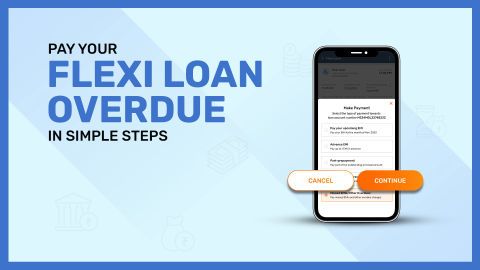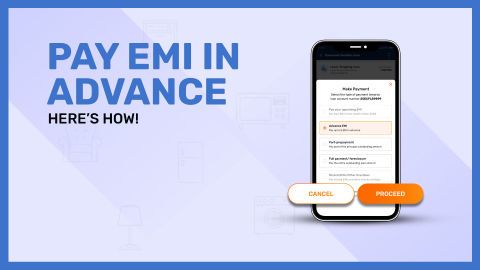Understanding business loan part payments
Managing business finances efficiently is crucial for sustained growth, and business loan part payments can be a game-changer. A part payment, also known as a partial prepayment, allows borrowers to pay off a portion of their outstanding loan before the scheduled tenure, reducing the principal and, in turn, the interest burden. This flexible repayment option helps businesses save money, shorten loan duration, and improve creditworthiness.
Most lenders allow part payments after a specific lock-in period, sometimes charging a nominal fee. The impact varies depending on loan type, lender policies, and payment amount. While part payments reduce future EMIs or shorten the loan tenure, they must align with the company’s cash flow to avoid liquidity issues.
Understanding when and how to make part payments can optimize financial planning and free up capital for future growth. Whether you're a startup or an established enterprise, strategic part payments can accelerate your business’s financial success.
What is a part payment in a business loan?
A part payment in a business loan refers to the act of paying off a portion of the outstanding loan amount before the scheduled repayment tenure. It is also known as a partial prepayment. Unlike regular Equated Monthly Installments (EMIs), which follow a fixed schedule, part payments allow borrowers to make an additional payment beyond their monthly obligation. This helps reduce the principal amount, leading to lower interest costs and sometimes a shorter loan tenure.
How does part payment work?
When a business takes out a loan, it is typically repaid in fixed EMIs that include both principal and interest. However, if a company experiences surplus cash flow—due to increased revenue, seasonal profits, or other financial gains—it may choose to make a part payment. By doing so, businesses can reduce the total outstanding principal, which directly impacts the interest calculation for future payments.
Benefits of part payment
Reduction in interest burden
Since interest is calculated on the outstanding loan amount, reducing the principal through a part payment leads to significant savings on interest over time.
Shorter loan tenure
Making a substantial part payment can help businesses close the loan earlier than the original tenure, freeing up financial resources for other investments.
Lower EMIs
Depending on the lender’s policies, borrowers may have the option to either reduce their EMI amounts or shorten the loan tenure after making a part payment.
Improved credit score
Reducing debt liabilities positively impacts the credit score, which can improve future borrowing prospects for the business.
Considerations before making a part payment
Lock-in period: Some lenders restrict part payments within a specified period after loan disbursal.
Charges and penalties: Certain financial institutions impose a prepayment fee, which varies based on loan type and lender policies.
Cash flow management: Businesses should ensure that they retain sufficient working capital before making part payments to avoid liquidity constraints.
By strategically utilising part payments, businesses can manage their debt efficiently, reduce financial stress, and optimise growth opportunities.
Benefits of making part payments on your business loan
Making part payments on your business loan can offer significant financial advantages, helping you manage debt more effectively and reduce overall costs. Here are the key benefits of making part payments on your business loan:
1. Reduces interest burden
Business loans accrue interest on the outstanding principal amount.
A part payment reduces the principal, leading to lower interest calculations for future EMIs.
Over time, this results in significant interest savings, making the loan more cost-effective.
2. Shortens loan tenure
By making part payments, you can reduce the overall loan term.
Faster loan repayment means your business becomes debt-free sooner.
Shorter tenure reduces financial stress and frees up capital for other investments.
3. Lowers EMI amounts
Some lenders allow borrowers to choose between reducing their monthly EMI amount or shortening the loan tenure.
A lower EMI improves cash flow, making it easier to manage daily business expenses.
4. Improves credit score
Paying off a part of your loan ahead of schedule reflects financial responsibility.
A reduced outstanding debt balance can positively impact your credit score.
A higher credit score improves your chances of securing better loan terms in the future.
5. Enhances loan eligibility for future borrowing
A lower outstanding debt increases your creditworthiness.
Lenders are more likely to approve new loan applications with favorable terms.
Businesses can secure additional funding when needed for expansion or investment.
6. Reduces financial stress
Managing a high debt burden can be overwhelming for businesses.
Reducing your loan liability through part payments provides financial relief.
It allows businesses to focus on growth and operational efficiency.
7. Maximises surplus cash utilisation
Instead of keeping idle cash reserves, businesses can use surplus funds to reduce debt.
This ensures that excess cash is utilized productively, leading to better financial management.
8. Helps in managing interest rate fluctuations
If the loan has a floating interest rate, part payments can help reduce the impact of interest rate hikes.
A lower principal balance minimizes the effect of rising interest rates.
By making strategic part payments, businesses can save money, reduce debt faster, and improve financial stability, ultimately leading to long-term success.
Steps to make part payments on your business loan
Making a part payment on your business loan is a strategic way to reduce debt and interest costs. Following the correct process ensures a smooth transaction and proper adjustments to your loan account. Below are the key steps to making a part payment on your business loan:
Step 1: Contact your lender
Before making a part payment, reach out to your lender through their customer service, online portal, or branch.
Confirm whether your loan is eligible for part payment and check for any applicable restrictions or charges.
Some lenders have a business loan part payment limit, which specifies the minimum or maximum amount you can prepay.
Ask about the impact of part payment on your EMI or loan tenure so you can make an informed decision.
Gather details about the required documentation and payment methods accepted by the lender.
Step 2: Make the payment
Once you have confirmed the eligibility and charges, proceed with making the payment using the preferred method—bank transfer, online payment, cheque, or demand draft.
Ensure the payment is made to the correct loan account to avoid any processing delays.
Some lenders provide an option to make part payments directly through their online portal or mobile app, simplifying the process.
Always keep the transaction receipt or reference number as proof of payment for future reference.
Step 3: Request loan adjustment
After making the payment, request your lender to adjust the loan accordingly.
Most lenders offer two options:
Lower EMI – Reduces the monthly instalment while keeping the tenure unchanged.
Shorter tenure – Keeps the EMI the same but shortens the overall loan term, leading to quicker debt clearance.
Verify the updated loan balance and business loan details through your lender’s online portal or customer service.
Request an updated repayment schedule or amortization table to track your new payment structure.
By following these steps, businesses can efficiently manage their loan repayments, optimise interest savings, and improve financial flexibility.
Conclusion
Making a part payment on your business loan is a smart financial move that helps reduce debt, lower interest costs, and improve cash flow. By following the right steps—contacting your lender, making the payment, and requesting loan adjustments—you can ensure a smooth process and maximize benefits. It’s essential to check for any lender-specific business loan part payment limits and choose the best repayment strategy. Regularly reviewing your business loan details ensures transparency and better financial planning. Strategic part payments can accelerate loan repayment and strengthen your business’s financial health.
Loan support made easy—read on — H2




